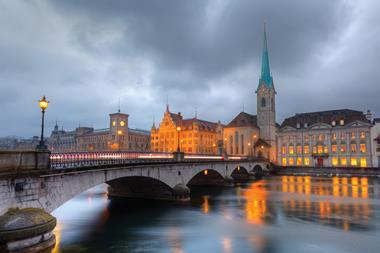Swiss Pensionskassen are paying on average 0.42% of their managed assets in asset management fees, according to a survey by pension fund association ASIP.
But experts have warned this does not paint the whole picture, as ASIP’s figure reflects only the costs that must be reported under new regulations and do not cover costs from private equity funds, hedge funds or funds of funds, which do not report a TER, or implicit costs in collective schemes.
As part of the reform implemented over the last two years in Switzerland’s second pillar, all Pensionskassen must now report a total expense ratio (TER) on individual investments and include explicit transaction charges and taxes from the top investment layer, as well as global custody, ALM and monitoring costs.
In April 2013, the top supervisory body – the Oberaufsichtskommission (OAK) – sent out a decree to add to the new regulatory provisions.
It stated that TERs in transparent collective investment schemes – such as investment funds, trusts and investment companies – are to be included in the calculations as well.
However, this still left out transaction costs and taxes in collective schemes, TERs in non-transparent (some private equity funds, hedge funds, funds of funds, etc) collective schemes and implicit transaction costs and taxes on the top investment layer, which are not covered by the regulation or the OAK decree.
Swiss consultancy c-alm did include those added, hidden costs in its initial report on the second pillar in 2009, commissioned by the Social Ministry in preparation for the structural reform.
In it, c-alm calculated a 0.57% cost share, an estimate borne out by subsequent calculations, most recently in 2012, at a slightly lower 0.51% – yet still well above the 0.42% reported by ASIP.
But c-alm said it expected more and more collective investment schemes to increase transparency and eventually be included in the TER calculations for Pensionskassen.
Ueli Mettler, a partner at c-alm, told IPE: “It is a matter of reputation for asset managers. They do not want to see their products on the so-called ‘black list’ of non-transparent vehicles in a Pensionskassen’s annual report.”
He added that UBS had been one of the first to start calculating a synthetic TER for its fund-of-fund offering, and others are following.
If all of the currently still non-transparent vehicles are calculating a TER, the costs reported by Pensionskassen could increase by as much as one-third, c-alm estimates.
Another trend, according to Mettler, is the inclusion of implicit transaction costs in the calculations, which, on average, adds another 15-20% to the reported costs.
Those are not calculated by the provider and can only be estimated by pension funds.
However, Mettler warned against including “too many estimate-based figures” and assumptions into the total calculation, as this would be “a path back into the mist”.
Currently, more than 98% of all collective investment schemes in the second pillar have attained transparent TER status.
However, costs in non-transparent vehicles are likely to be considerably higher than the average.
Larger Pensionskassen have reported lower asset management costs on average, and mostly have committed to 100% transparency on fees.
The largest Pensionskasse in Swizterland, the CHF36bn (€29.4bn) Publica – as well as the CHF27bn BVK, the pension fund for the canton of Zurich – fully disclose their asset management costs.
At Publica, the cost slightly increased last year to 0.22% (from 0.19% in 2012) due to “more expensive” emerging market investments, the Pensionskasse noted in its annual report.
The BVK, however, cut its asset management costs from 0.22% to 0.19% year on year – in 2009, costs had been at 0.46%.
At the CHF8.7bn Aargauische Pensionskasse (APK), cost transparency is “almost 94%”, with the TERs of some products “not yet fully in line” with OAK calculation requirements.
The costs amount to 0.50% of assets, far higher than at Switzerland’s larger funds.
























No comments yet